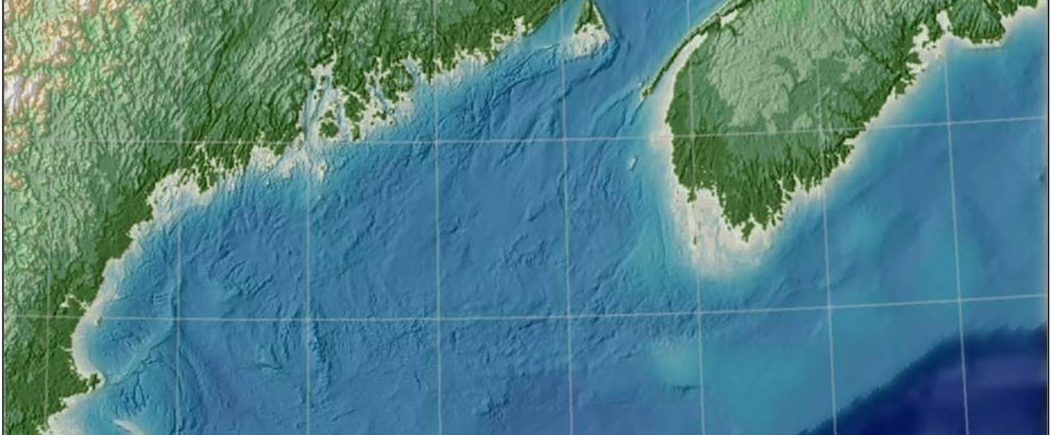Gulf of Maine
The Gulf of Maine’s complex geology and oceanography combine to support one of the most productive areas in the global ocean, one that supports diverse marine life and a longstanding human population. Explore the content below, provided by the Census of Marine Life, to learn more.
Physical Characteristics
Geology and habitats within the Gulf – The Gulf of Maine’s unique history has created a “sea within a sea”or a distinct region with ocean currents, bottom topography and habitats unlike any other.
If you look at a map of the eastern seaboard from Florida to New York, the continent meets the ocean in a fairly consistent matter – gently sloping, low-lying lands laced with tidal rivers, marshes and bays warmed by the Gulf Stream waters and graced with long barrier islands made up of coastal sediments.
Move up the coast to the Gulf of Maine – which extends from Cape Cod to Nova Scotia – and the scenery changes dramatically. The steeper New England and maritime Canada coast is characterized by rocky shorelines, hundreds of harbors, and thousands of islands made of ledge, or upturned bedrock
As you move up to the Bay of Fundy, the Gulf of Maine’s northernmost feature, one can see how its enclosed shape gives rise to some of the highest tides in the world, up to 8 meters high. (Image: Bay of Fundy region)
These are just a few of the physical characteristics help to make this marine ecosystem one of the most varied and productive in the world.
Oceanography
Circulation, nutrients, and primary productivity
Biodiversity of the Gulf
Definitions, species lists, and taxonomic guides – Biodiversity is most commonly thought of as the number of species in an area. There are other ways of expressing biodiversity that take into account the relative abundance of different species. Biodiversity also exists at two other important levels: genetic diversity within a population*, and diversity in the types of communities* in a larger area or ecosystem.
The extant biodiversity of ecosystems is a legacy of life on earth that should be preserved for practical as well as ethical reasons. At the simplest level, biodiversity represents the reservoir of options that a system possesses to respond to changes over time, and a reservoir of information about life itself. We do not understand the role of everything today. Seemingly minor species or hidden aspects of biodiversity may play surprisingly important, but still unknown, roles in today’s ecosystems. Moreover, we cannot predict what aspects of today’s biodiversity may emerge as important in the future. At a higher level, patterns of diversity determine how systems function-for example, in storing and recycling nutrients, fixing inorganic carbon, producing fish, and supporting other species of special interest. In addition to these important roles in “life support”, biodiversity presents us with opportunities for new and potentially important discoveries (for example, in the area of medicine), and a wealth of aesthetic wonders.
Understanding and conserving biodiversity are goals that integrate across many human needs and values. Knowledge of biodiversity and the ways that it influences ecosystem functions are thus central to the development of ecosystem approaches to management.
Human Presence
The human component of Gulf of Maine biodiversity – The human species has been an integral part of the Gulf of Maine ecosystem since the earliest native settlers in this region. To understand the human impact to the marine ecosystem, we must consider the historic and current patterns of human activity on land and in the sea.
